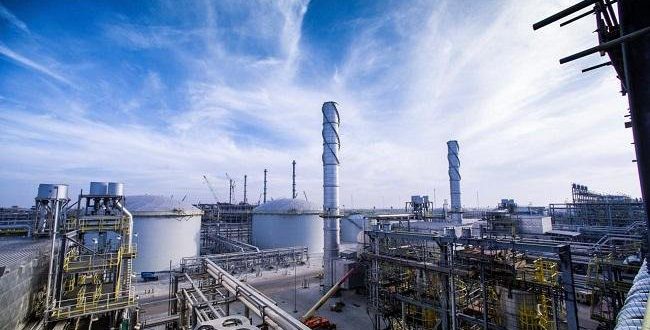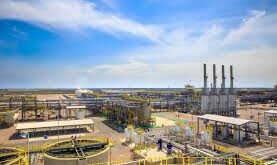Asia appears well prepared for OPEC`s new crude production cut era as Chinese. South Korean and Japanese refiners` flexible feedstock procurement strategies would insulate them against any sharp reduction in Middle Eastern crude supply.
OPEC. Russia and nine other allies agreed Friday to deepen collective output cuts by 503.000 b d to 1.7 million b d from January through March. Saudi Arabia took it even further. declaring it would voluntarily slash another 400.000 b d of production beyond its new quota.
However. the latest OPEC-led output cuts will likely leave more room for Asian refiners to diversify supply sources away from the Middle East. with the Americas expected to play a key role as a major alternative crude supplier. refinery and trade sources said.
South Korea. for one. has significantly reduced its dependence on OPEC and Middle Eastern supplies over the past decade and it emerged as the biggest customer of US crude oil in Asia this year.
Asia`s fourth biggest oil consumer imported 112.55 million barrels from the North American producer over January-October. almost threefold higher than 40.67 million barrels received a year earlier. latest data from state-run Korea National Oil Corp. showed.
Meanwhile. the country`s biggest refiner SK Innovation is slightly worried about tightening supply of heavy sour Middle Eastern crude oil. but South America also provides plenty of options to buy similar grades. a company official told S&.P Global Platts.
`Heavy grades have recently been in short supply … but we could easily look for medium and heavy sour grades from Brazil. Canada and Guyana to make up for any shortfall caused by the OPEC+ cuts.` the official said.
Plenty of sour crude could be sourced from Mexico as well. multiple South Korean refinery sources said. indicating that the country received more than 40 million barrels of Isthmus and Maya crude from the Central American producer this year.
China`s state-run and independent refiners have also been relying on Latin American producers for their medium and heavy crude requirements in recent quarters. and any shortfall in OPEC supplies could be filled by fuel-oil rich grades from Brazil in particular. industry sources and analysts told Platts.
`Minor reductions can be supplemented by non-OPEC exporting countries. especially when IMO 2020 is implemented.` said Kang Wu. head of Platts Analytics Asia. Brazil emerged as the second biggest crude supplier to the country`s independent refining sector this year. Chinese independent refiners combined imported 19.69 million mt from the Latin American producer over January-November. up 34% from the same period a year earlier.
Brazil`s Lula crude was also ranked the second most favored feedstock grade for the sector this year. The refiners purchased close to 14 million mt of the heavy sweet crude over January-November. the latest Platts survey showed.
In the event of tighter Middle Eastern crude supply. Japan could also turn to US and Ecuador. with WTI. Mars Blend and Napo crude regularly flowing to Asia`s third biggest oil consumer this year. a crude and condensate marketing source at a Japanese integrated trading firm based in Singapore said.
Japan imported 61.211 b d from the US over January-October. almost double the 33.806 b d received during the same period a year earlier. data from the Ministry of Trade. Industry and Energy showed.
Japan also raised its imports from Ecuador to 40.561 b d over January-October. up 33.7% from 30.346 b d received a year earlier.
ASIAN CUSTOMER CARE
Asian refiners broadly expressed strong confidence that OPEC and its allies will likely keep any supply cuts to Asia minimal due to the region`s status as the biggest and most important customer base for the producers. The group of producers are unlikely to reduce their crude exports to Asia by more than 200.000 b d in the first quarter 2020. according to a Platts survey of traders at major Asian refiners including PetroChina. SK Innovation. S-Oil. PTT and Fuji Oil.
`Most of the new output cuts and export reduction would be geared towards European and US end-users … Asian consumers are VIP customers for most. if not all OPEC and other big producers.` a crude feedstock trading manager at state-run Chinaoil based in Beijing said.
Demonstrating OPEC producers` strong dedication to keep steady and uninterrupted supply to Asian customers. Saudi Aramco managed to deliver full term contractual volumes to most of its customers in the Far East so far in Q4. despite the September 14 attacks on Saudi Arabia`s major oil facilities. Platts reported previously.
China in fact saw its crude imports from Saudi Arabia surge 76% year on year and 17.4% month on month to a new high of 1.99 million b d in October. according to the latest data from the General Administration of Customs.
South Korea also ended up receiving more Saudi crude following the attacks. Asia`s fourth biggest oil consumer received 22.56 million barrels from the OPEC kingpin in October. 8.1% more than 20.88 million barrels imported in the previous month.
Most of the October arrival cargoes had been loaded during September as typical voyage time from Persian Gulf ports to Northeast Asia is around 25 days.
`The attacks were supposed to have crippled 5.7 million b d of the kingdom`s production in September … it highlights Aramco`s rigorous Asian customer care.` a Korea Petroleum Association official based in Seoul said.
 Iran Energy News Oil, Gas, Petrochemical and Energy Field Specialized Channel
Iran Energy News Oil, Gas, Petrochemical and Energy Field Specialized Channel




